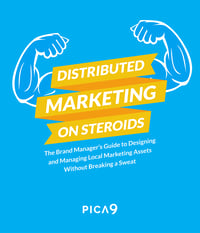A few years ago, I was hired at Pica9 to help the company complete its journey to full compliance with the SOC-2 framework. We knew at the very beginning that the road was likely to be long and tough. We also know that this journey was essential, because SOC 2 isn't just about keeping assets safe; it's about keeping our customers, employees, and shareholders safe as well.
But while the journey has indeed been long, I'm pleased to say that it has yielded many benefits we hadn't fully anticipated at the outset—and that are still coming to light, even several years down the road.
In this post, we'll cover the basics of SOC-2 and then talk about the approach to compliance that evolved here at Pica9. My hope is that you'll be able to take away a few helpful principles, and renewed motivation for making the same journey within your organization.
A Brief Overview: What is SOC 2, and Why Does It Matter?
SOC 2 (Service Organization Control 2) is a compliance standard developed by the American Institute of CPAs (AICPA). It evaluates a service provider’s systems and controls in relation to five “Trust Services Criteria”: security, availability, processing integrity, confidentiality, and privacy.
Unlike more prescriptive frameworks, SOC 2 offers flexibility in how companies meet these criteria, but that flexibility comes with a caveat—it demands genuine organizational maturity. It’s not just about ticking boxes. It's about operationalizing security and accountability into your culture and processes.
At Pica9, we saw SOC 2 not only as a strategic business necessity—especially as more of our enterprise customers began requiring it—but also as a way to elevate the quality of everything we do, from software architecture to client support. That emphasis on organizational maturity defined our efforts from the very beginning, and as it turns out, made all the efforts more than worth it.
1. Following the Neural Pathways: Let Your Processes Lead the Way
When we first began thinking seriously about SOC 2 in the mid-2010s, our instinct was to ask, “What do we need to change to become compliant?” But we quickly realized this wasn’t the right question. Instead, we needed to ask: What are we already doing that works—and how can we build on that?
We found that our most secure and effective practices—those that protected both our customers’ data and our own—had developed organically. These were the “neural pathways” of our business: well-worn patterns that evolved naturally to help us succeed. For example, our dev team already had strong habits around code review and CI/CD testing. Our customer success team had detailed access controls for client accounts. Our finance and admin staff were vigilant with permissions and documentation.
Rather than fight these patterns or layer artificial controls on top of them, we aligned our SOC 2 efforts with them. We codified what was already working into formal policies. We identified gaps, then worked to fill them in a way that felt native to our workflows—not imposed from outside.
This approach made our compliance program not just more authentic, but more sustainable. Security wasn’t a separate set of rules—it was embedded in the very way we worked.
The takeaway: Don’t start by inventing a new way of doing things. Start by observing your best practices. Then, reinforce them—like strengthening synapses in the brain—with repeatable processes, supportive tooling, and ongoing training.
2. Incrementalism: Building Maturity, One Step at a Time
From the start, we knew that SOC 2 was not a sprint—it was a marathon. And rather than attempt a radical overhaul or a one-time push for certification, we adopted an incrementalist mindset.
First came the policy phase. We worked with senior management to map our existing operations to the SOC 2 control framework. Rather than simply draft policies to pass an audit, we made sure every policy had a purpose and could be meaningfully implemented. When a policy didn’t fit how we worked, we didn’t force it—we revised our process, or adjusted the policy, or both.
Then came the implementation phase. We didn’t roll everything out at once. Instead, we prioritized based on risk, customer impact, and effort. For example, password management and multi-factor authentication (MFA) were quick wins, while logging and alerting required more architectural changes. Each step brought us closer—not just to compliance, but to better operational resilience.
Finally, enforcement and testing became part of our daily rhythms. Compliance didn’t live in a document; it lived in our calendars, our Monday.com channels, our pull requests, and our onboarding checklists. Over time, adherence to controls became less a conscious act and more like “muscle memory.” It became who we were.
Crucially, we resisted the temptation to do the minimum. It’s easy to write a policy and never revisit it. It’s easy to install a tool and never monitor it. But those shortcuts are fragile. They create a brittle system that looks compliant, but isn’t. We took the longer road—and the payoff has been lasting maturity.
The takeaway: SOC 2 compliance isn’t a finish line—it’s a flywheel. Each rotation makes you stronger. Keep turning it.
3. Collaboration: Bringing the Whole Organization Along
Perhaps the most important lesson we learned was this: SOC 2 is not a job for the IT department. It’s a company-wide initiative that touches every team.
Yes, our developers and DevOps team were central. But so were our marketers, who had to think differently about how they handled prospect data. So was our customer success team, which had to update processes for secure support and documentation. Our finance and admin staff helped manage vendor risk assessments and access control audits. Everyone had a role to play.
We held regular internal check-ins to communicate progress, celebrate milestones, and explain not just what we were doing, but why. We built shared accountability—one team’s adherence to a control often depended on another’s follow-through.
This collaboration built trust and visibility. It turned compliance from a burden into a shared achievement. And it helped everyone see the bigger picture: we’re all in this together.
Equally important, we celebrated our wins—big and small. When we passed our Type I audit, we paused to recognize the effort. When we implemented a new secure workflow, we called it out in our all-hands. And when a prospective customer chose Pica9 because of our SOC 2 status, we made sure the team knew their work made that possible.
The takeaway: Compliance is culture. And culture is everyone’s job.
In Retrospect: What We Gained
Today, Pica9 proudly holds both SOC 2 Type I and Type II certifications. But more than that, we hold something deeper: a culture of accountability, a set of processes that scale with our business, and a renewed sense of purpose.
SOC 2 didn’t just make us more secure—it made us more mature. It clarified roles and responsibilities. It helped us spot and close gaps we didn’t know existed. It gave us a common language across departments. And yes, it helped us win customers who care about security and professionalism.
But perhaps the greatest benefit was confidence. We now know we can handle the complexity that comes with growth—because we have the systems, the mindset, and the people to do it right.
Final Thoughts
If your company is on the road to SOC 2, or considering it, our advice is simple:
-
Start by looking inward. Your best practices are already there. Build from them.
-
Go step by step. Don't aim for perfection. Aim for progress.
-
Get everyone involved. SOC 2 is not a siloed initiative. It’s a shared commitment.
And when you hit a milestone—celebrate it. You've earned it. Not just because a certificate says so, but because your team, your culture, and your product are stronger for it.




